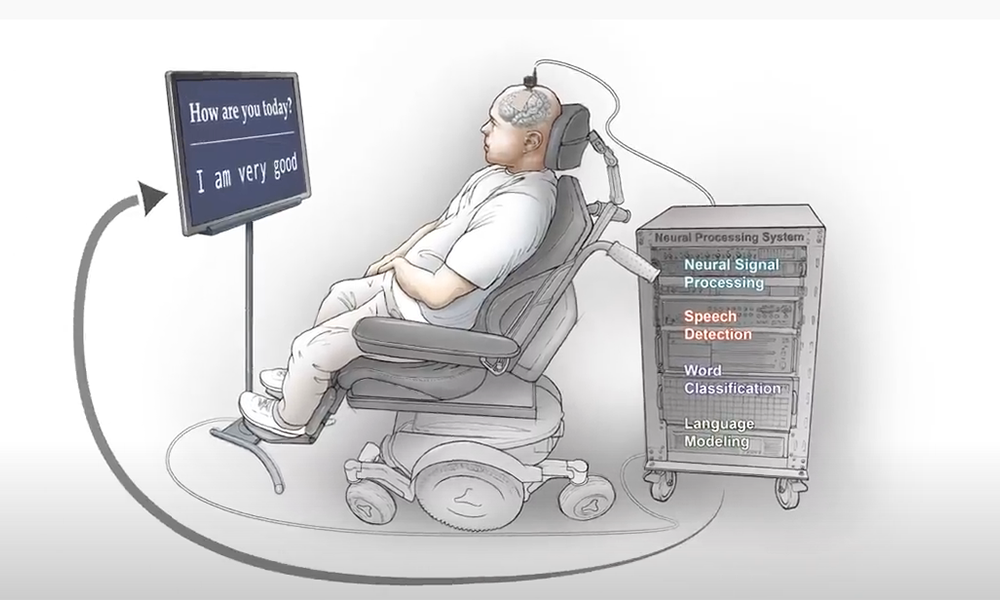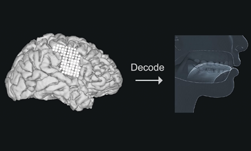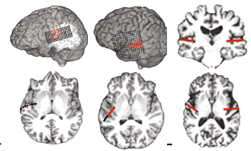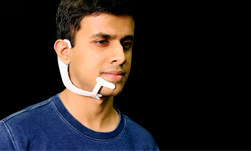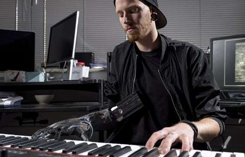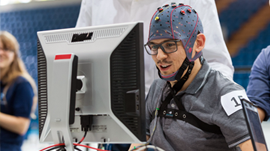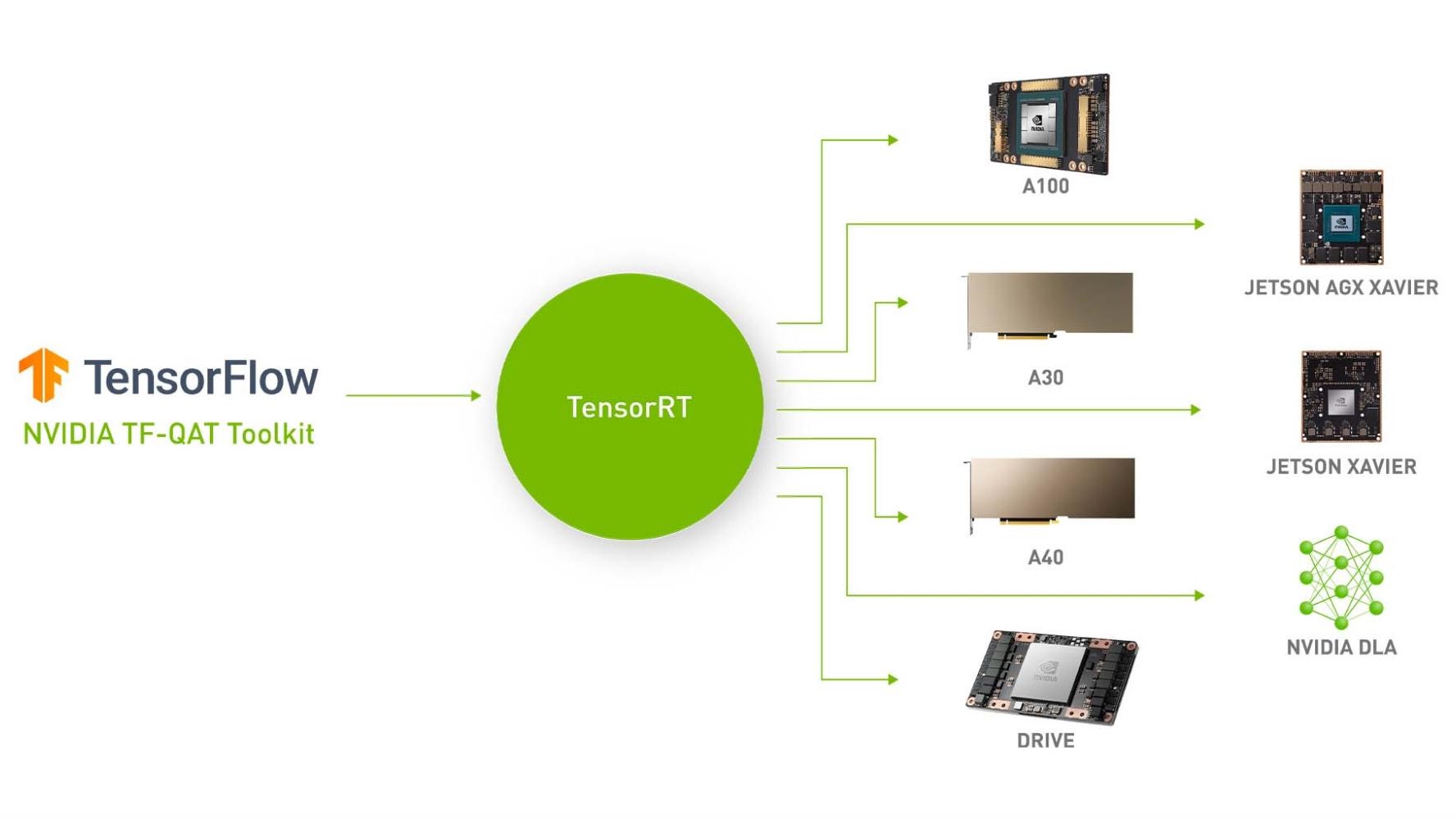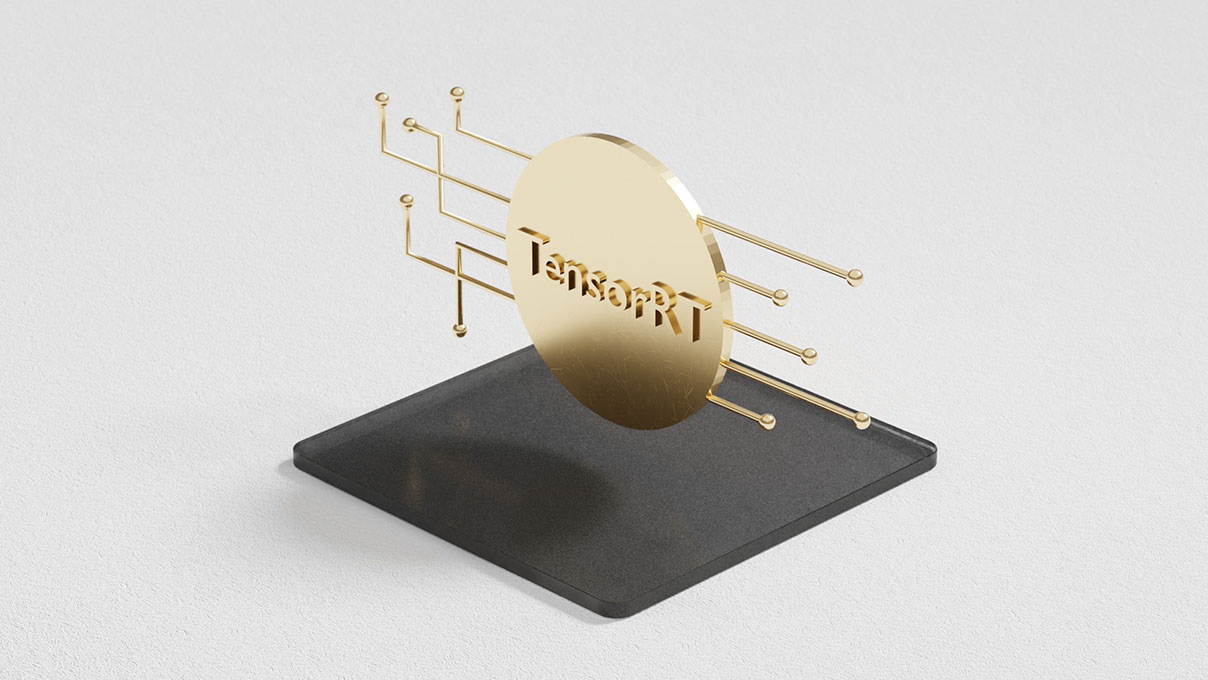New research out of the University of California, San Francisco has given a paralyzed man the ability to communicate by translating his brain signals into computer generated writing. The study, published in The New England Journal of Medicine, marks a significant milestone toward restoring communication for people who have lost the ability to speak.
“To our knowledge, this is the first successful demonstration of direct decoding of full words from the brain activity of someone who is paralyzed and cannot speak,” senior author and the Joan and Sanford Weill Chair of Neurological Surgery at UCSF, Edward Chang said in a press release. “It shows strong promise to restore communication by tapping into the brain’s natural speech machinery.”
Some with speech limitations use assistive devices–such as touchscreens, keyboards, or speech-generating computers to communicate. However, every year thousands lose their speech ability from paralysis or brain damage, leaving them unable to use assistive technologies.
The participant lost his ability to speak in 2003, paralyzed by a brain stroke following a car accident. The researchers were not sure if his brain retained neural activity linked to speech. To track his brain signals, a neuroprosthetic device consisting of electrodes was positioned on the left side of the brain, across several regions known for speech processing.
Over about four months the team embarked on 50 training sessions, where the participant was prompted to say individual words, form sentences, or respond to questions on a display screen. While responding to the prompts, the electrode device captured neural activity and transmitted the information to a computer with custom software.
“Our models needed to learn the mapping between complex brain activity patterns and intended speech. That poses a major challenge when the participant can’t speak,” David Moses, a postdoctoral engineer in the Chang lab and one of the lead authors of the study, said in a press release.
To decode the responses from his brain activity, the team created speech-detection and word classification models. Using the cuDNN-accelerated TensorFlow framework and 32 NVIDIA V100 Tensor Core GPUs the researchers trained, fine-tuned, and evaluated the models.
“Utilizing neural networks was essential to getting the classification and detection performance we did, and our final product was the result of lots of experimentation,’ said study co-lead Sean Metzger. “Because our dataset was constantly evolving and growing, being able to adapt the models we were using was critical. The GPUs helped us make changes, monitor progress, and understand our dataset.”
With up to 93% accuracy, and a median rate of 75%, the model decoded the participants word’s at a rate of up to 18 per minute.
“We want to get to 1,000 words, and eventually all words. This is just the starting point,” Chang said.
The study builds off previous work by Chang and his colleagues, which developed a deep learning method for decoding and converting brain signals. Unlike the current work, participants in the previous study were able to speak.
Read more >>>
Read the full article in The New England Journal of Medicine >>>
